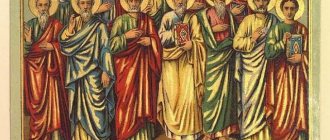Inside the temple there are so-called prayer wheels. When Buddhists pass by them, they touch them with their hands and the drum begins to rotate. What's the point? The idea is that mantras or sutras are written on thin paper inside a drum, and it is believed that when the drum rotates, the sacred energy of the mantra or sutra circulates around and begins to work for the benefit of all living beings. And that’s why Buddhists can walk for hours and spin drums, thereby changing the vibration of space to a softer one.
India
“Buddhism” means “Teaching of the Enlightened One.” A Buddha is an enlightened person, a person who knows the truth about everything, who knows the true state of things and is therefore able to act appropriately, with respect for all things. Buddhism is a religion based on intellect, science and knowledge with the goal of eliminating suffering and its source. Worshiping sacred objects through rituals and ceremonies, making offerings, or reciting prayers is not Buddhism. The Buddha rejected all this as foolish, unreasonable and unfounded. He also rejected the celestial beings that some groups of people recognized as beings, and the deities that were supposed to live in the sky, each on their own star. Thus, we see that the Buddha made statements such as “The “golden room” (kondo) houses all the images of the Buddha (Buddha Shakyamuni, compassionate Amitabha, etc.) - embroidered, painted, in the form of sculptures. In the same room there can be any images of various revered beings, bodhisattvas.
Temple of the Emerald Buddha in Thailand
Buddhism stood at the origins of religion. But it is very different from other religions in that it does not have God. Rather, it is a philosophical system that is directly related to certain customs and rituals. The life of a religious person is shaped by certain actions: The history of the formation of Buddhism in Russia goes back to the 8th century. But the first spread of Buddhism in our country occurred in the 17th century, thanks to the Kalmyk tribes. Then Buddhism as a full-fledged religion spread in Buryatia thanks to the Mongolian and Tibetan lamas, who took refuge in these territories from political persecution. Buddhism owes its official recognition to Empress Catherine Alekseevna II, who in 1764 established the position of Lama of Eastern Siberia and Transbaikalia. This can be considered the starting point for the development of Buddhism in Russia. It is interesting that in response to this gesture, the lamas of Buryatia recognized the empress as the incarnation of the so-called White Tara - the female incarnation of the bodhisattva Avalokiteshvara.
Links
Today Buddhism is one of the universal and officially recognized religions, so today there is an opportunity to practice and engage in Buddhism even in prisons. For example, the Federal Penitentiary Service has registered nine dugans and several Buddhist prayer halls located in prisons throughout the country. After reading the book, burial follows, which also follows a special tradition, necessarily accompanied by the recitation of mantras. People believe that this helps avoid further sacrifices in the family.
Interior design of a Buddhist temple
The Buddhist temple is a square room with an altar opposite the entrance. In the center of the altar area, a Buddha statue stands on a raised platform, flanked by smaller saints and bodhisattvas. On the platform in front of the statues there are oil lamps and various offerings from believers. “Tanks” hang on the walls. - images of deities painted on silk fabrics with multi-colored paints. In Buddhism, rituals and ceremonies may change their name depending on the region, but the essence remains the same. Europeans may not be aware of these traditions, but the monks take them seriously and believe they are effective.
Buddhist monasteries in Russia
Their architecture and structure vary depending on the region. A temple usually consists not only of buildings, but also of the surrounding area. Buddhist temples are intended to symbolize the five elements: fire, air, earth, water and wisdom. Centers of Buddhism in Tibet Buddhism arose in Tibet around the 5th century AD, assimilating local religious cults and traditions. Here she took on her unique form. Tibetan Buddhism is a synthesis of two main movements in Buddhism: Mahayana and Tantrism. Both teachings are aimed at achieving Nirvana. It was Tibetan Buddhism that turned into a powerful religious movement. Many monasteries were founded, which were also universities, repositories of knowledge and wisdom. The Buddhist sites in Tibet that are visited mainly by pilgrims are Lhasa, the capital of Tibet, where they admire the Potala palace complex, as well as the famous monasteries and shrines of Buddhists. Lhasa translated from Tibetan means “abode of the gods”. The two sacred Buddha statues housed in the Potala Palace have attracted numerous pilgrims from all over the world since ancient times. Among the sacred sites for Buddhists in Tibet is the Jokhang Temple, which also houses an ancient sacred statue of Buddha.
Sevenfold prayer
The sevenfold prayer is a fairly well-known practice that contains the essence of the entire Buddhist path. There are seven parts, each with a specific purpose:
(1) I prostrate before the Buddhas who adorn the three times, and before the Dharma and the Supreme Assembly, bowing with as many bodies as there are atoms in the universe.
(2) Just as Manjushri and others made offerings to you, Victorious Ones, I also make offerings to you, the Thus Departed Protectors, and to your spiritual sons and daughters.
(3) In samsaric existence without beginning, both in this life and in others, I committed negative actions involuntarily and forced others to do [them], and also, oppressed by naive delusion, I rejoiced with [them]; I consider everything that I have done to be wrong, and I admit it openly, sincerely in the face of the Defenders.
(4) Happy, I rejoice in the power of the positive ocean from the goal of bodhichitta that they have developed in order to bring joy to all beings who are limited and their actions that are beneficial to beings.
(5) With folded palms, I appeal to the Buddhas of all directions: “Please light the lamp of Dharma for limited beings, suffering, groping in the dark.”
(6) With folded palms, I pray to the Victorious Ones who are ready to go beyond grief: “Please remain for countless aeons, not leaving wanderers blinded.”
(7) Whatever positive force I have created through all that has been done now and previously, may I thereby completely relieve the suffering of all limited beings.
- The first part of prayer is prostrations
. We prostrate to the Buddhas as a sign of respect for their qualities: compassion, love and wisdom. As we prostrate, we touch the floor with our upper body—our head—which also helps us overcome pride and cultivate modesty. - Then we make offerings
. Most Buddhists offer bowls of water, but the object of the offering is not that important. What really matters is the motivation for giving: we give our time, energy and what belongs to us. This motivation helps us overcome attachment. - Next, we admit our shortcomings and mistakes
. Perhaps sometimes we are lazy or selfish, and sometimes our behavior is destructive. We acknowledge it, we regret it, and we move on with the firm intention of trying not to repeat the same mistakes. This helps us overcome the influence of negative karmic impulses. - Then we rejoice
. We remember all our creative actions and all the beautiful creative actions of other beings. We also think about the incredible deeds of the Buddhas. This helps overcome envy. - Then we ask for the teaching
, and this creates a receptive state of mind in us. We say: “We want to learn, we want to make ourselves and other beings happy!” - We beg the teachers not to leave us
. In the previous part we opened ourselves to the teachings, and now we want the teachers to stay with us and give instructions until we achieve complete enlightenment. - Finally, we reach the most important stage - initiation
. We dedicate all the accumulated positive power so that it benefits us and all beings.
As can be seen from the example of this prayer, the essence of Buddhism is not that some being comes down to us and saves us from problems. One proverb says: “You can lead a horse to water, but you cannot make it drink.” In other words, the Buddhas show us the way, but we need to make the effort to overcome attachment and unawareness and unlock the limitless creative potential that we all possess.
Links
When entering the temple, it is customary to greet images of Buddha, deities and bodhisattvas. Traditionally, a Buddhist approaches the image, folds his hands in a prayerful greeting, and brings them first to the forehead to greet the image with the mind, then to the mouth to greet the image with speech, and to the chest to greet the image with the heart. I have come across such a concept as prayer in Buddhism. I don’t quite understand what meaning this word has in Buddhism if there is no God? Who do Buddhists pray to? Or maybe in Buddhism prayer is a kind of spell?
How to pray properly in Buddhism
First of all, each mantra is a series of syllables that can form entire words in Sanskrit, available for translation, but not translated. The words of the mantras are left and read only in the original language, because to achieve a positive result, a person does not necessarily need to understand the meaning of individual words, these meanings need to be felt.
Some people draw parallels between mantras and witchcraft spells and conspiracies; in fact, although they have certain similarities, they are not the same thing. If we look at Buddhist definitions, a mantra is a specific sound symbol that denotes an aspect of the enlightened mind and spiritual experience.
Any practitioner must remember that mantric sounds are not only something material and external, what the human ear hears is only part of the mantra, the main thing in it is the energy vibrations created, which lead to the desired effect. The power of sound can be measured, but the power and effectiveness of prayer cannot be reduced to an exact value.
The mantra of love and tenderness works in everyone.
Mantras are a certain way.
By pronouncing sacred words, a person passes their energy through his material and spiritual body and resonates with this energy. That is why Buddhist mantras must be pronounced yourself, and not just listened to. The famous and revered Lama Govinda said that a mantra can give any person enormous spiritual benefits and help in life, but only if the person can resonate with the spoken words, and therefore it is not enough to write down and listen to mantras, every word must be pronounced and feel.
A mantra can be called an internal sound and internal vibration of energy, even an internal feeling, which is why the physical sound of prayer does not have important meaning and is not strong enough to somehow influence a living being.
At the same time, all of the above does not mean that mantras do not need to be read out loud, you will just have to remember that uttering a gross word is only a means for more easily experiencing its subtle, mental meaning.
Working with mantras is one of the most important components of Buddhism and tantra. There are many different mantras that can be classified into different categories, but each prayer has a number of basic universal characteristics.
First of all, each mantra is a series of syllables that can form entire words in Sanskrit, available for translation, but not translated. The words of the mantras are left and read only in the original language, because to achieve a positive result, a person does not necessarily need to understand the meaning of individual words, these meanings need to be felt.
It is also worth noting that the words of prayers do not lend themselves to conceptual and logical analysis; for the most part, they are meaningless, and each person understands prayer in his own way.
Many mantras may contain the full or partial name of the Buddha or Bodhisattva to whom they are dedicated.
Some researchers and practitioners say that Buddhist mantras are not just dedicated to the Buddha or Bodhisattva, they are their sound equivalents, symbols, and sound designations. Simply put, a mantra is an image, a manifestation of a deity, some even believe that this is his real name.
If you are familiar with European concepts of witchcraft and esotericism, then you know that European magicians from time immemorial have believed that any entity, no matter who it is, can be summoned, but this requires its name.
Comparing these views on calling helping spirits and Buddhist mantras, one can also assume that reading these prayers is an appeal, a call to Buddhist deities, a direct request for help and protection.
Om Bhaikandze Bhaikandze Maha Bhaikandze Ratna Samu Gate Svaha is a powerful prayer that allows you to mobilize all the strength and energy of the body. It improves immunity and promotes rapid recovery from any disease. To strengthen this mantra, reading should be done after cleansing meditation.
Om Mani Padme Hum is a famous prayer that is usually associated with a feeling of compassion for all living things; it is dedicated to the compassionate Buddha. These words have powerful energy that can help in all aspects of a person’s life.
It is believed that if you chant this mantra more than a million times, a person will receive the gift of clairvoyance, but this is a very long process, which may take up to a year to complete. To quickly feel the effect of this prayer, you need to chant it 108 times within the walls of your home.
Om Ah Hum So Ha is a cleansing mantra that can act almost instantly. It can be used to cleanse the energy of your physical and spiritual body, to cleanse the house and all objects in it. The prayer must be chanted 108 times, in time with your own breathing. These words are also used when making offerings to Buddha at a home shrine or altar, and Buddhists also say them before eating.
Jaya Jaya Sri Nrisimha is a conspiracy against fear that can give a person peace and peace of mind.
Om, Tat savitur varenyam, Bhargo devasya dimahi, Dhiyo yo nah prchyodayaat. This is a sacred passage from the Rig Veda, to be precise - the tenth verse of the 62-hymn, the third Mandala of the Rig Veda. In the Indian tradition, this text is usually attributed to Vishwamitra, one of the seven oldest divine sages.
This is one of the few prayers that can be translated almost completely with meaning. In the classical translation into Russian, these words mean: We want to meet the desired, Shine of God Savitar, Which should encourage our thoughts.
Eg On Kar Sat Nam Karta Purk Nirbho Nirver Akal Mure Ajuni Seibhong Gur Prasad Jap Ad Sach Jugad Sach Hebhi Sach Nanak Jose Bhi Sach is a powerful mantra that affects the entire human body, his physical body, spiritual and psychological state.
This prayer is a sound vibration aimed at freeing the individual's mind from all negative and destructive programs. Many words included in this matra have a translation, but it makes no sense to do this translation, since such knowledge can only lead one astray from the right path.
Prayer in Buddhism is quite different in meaning from approximately the same action in other religions. In Buddhism, prayer is an intentional practice that complements our rational mind with emotions.
Prayer is included in many meditation practices and it is used to form an intention, strengthen it, and strengthen our own practice. It is important to understand that even when we pray to Buddhas and Teachers, in Buddhism they are understood as the mirror of our mind and this is not a prayer from higher beings for help, but a prayer to oneself, awakening oneself.
Finally, in the morning, create a strong intention to continuously maintain this practice throughout the day. And pray with all your heart for success - prayer is like a magical power that we possess, but forget to use.
If you are unable to obtain the Clear Light experiences of day, meditation, and sleep, pray again and again for these results. The simple power of desire and prayer is often forgotten. We believe that prayer is something out of the ordinary, addressed to some incredible force external to us. But this is not true at all. The most important thing is when praying, to acutely feel your intention and desire, to put your whole soul into prayer.
Probably, initially, when people wished each other good night or good morning, or a good sleep, these words contained some kind of power, some kind of feeling. Nowadays these are just familiar phrases that we mutter mechanically, without putting any special feelings or meaning into them. We use the same words, say them in the same tone, but they have no power. Try not to let the same thing happen with prayer. Know that prayer has power, but it lies not in the words, but in the feeling that you put into the prayer. Generate an intention within yourself, make it strong and put it into prayer.
Prayer is an integral part of the life of every believer. And today we will talk about how representatives of three world religions pray.
In general, there are no strict rules on how to pray to God. Clergymen advise the laity to pray as if they were having a conversation with God. Everyone can pray in their own way - as best they can. The main thing is that the prayer comes from the heart. Do not be deceitful and do not hide anything that is in your heart. Try to be humble in prayer and then God will hear you.
The outward manifestation of prayer is clasping your hands together at chest level.
Devotees believe that the shorter the appeal, the more effective it is. Therefore, if it is difficult for you to memorize long prayers, then it will be enough to say, turning to God, “Lord, have mercy” or “God, be merciful to me, a sinner.” You need to repeat these words until they touch your heart.
In church, it is customary to pray in front of an icon depicting the face of the saint to whom you are addressing. To make prayer more effective, you can light a wax candle purchased at a church store.
The creation of all living beings in Islam is the prerogative of Allah, so depicting living beings is considered a sin, much less worshiping them. For this reason, only decorative ornaments and patterns are present in the Mosque.
Muslims attach great visual importance to prayer in addition to its internal content. According to the regulations, prayer must be performed five times a day. Namaz is a prayer during which Muslims perform ritual movements in a certain order.
External actions play a big role and must be strictly followed. For example, you need to stand straight during prayer, and the toes of your feet should not point in different directions. Your hands need to be held in a certain way; when bending, your knees should be straight and should not be bent.
In Islam, there are prayers that can be performed without preparation or ritual. For example, prayer when visiting a sick person, prayer after eating, when entering a house or mosque, prayer when visiting the toilet, etc.
It is very important when you pray to fully concentrate on what you are saying. The person praying should have the feeling that Allah is watching him. If there is no mosque nearby, then prayer is allowed everywhere, regardless of the location of the believer.
It is believed that you need to perform namaz sincerely and with all your heart, then Allah will accept it.
Initially, there was no prayer as such in the teachings of Buddhism, but over time, representatives of some directions of Mahayana and Vajrayana began to offer their prayers to Bodhisattvas. They ask the Bodhisattvas for relief from suffering, help for all living beings and the achievement of enlightenment.
Followers of some Vajrayana schools use a special prayer mill for prayer, inside of which there is a piece of paper with a prayer. Each revolution of the mill is equivalent to reading a prayer.
And in Amidaism, also known as Pure Land Buddhism, people offer their prayers to Amida Buddha (the original Buddha). They believe that only he can help them get to the pure land and get rid of suffering.
India
In modern Indonesian, the term kandi can be translated as “temple” or similar structure, especially in the Hindu and Buddhist faiths. Thus, temples in Cambodia (such as Angkor Wat), Champa (Central and Southern Vietnam), Thailand, Laos, Myanmar and India are also called kandi in Indonesian. What does it mean to be a Buddhist? Explained in terms of this religious teaching, being a Buddhist means taking refuge in the “Three Treasures.” The “Three Treasures” are the Buddha, his teachings, and the community that formed around those teachings. The building is designed to embody all the “Three Treasures”. They are presented in one place, but divided into parts, each of which has its own semantic and religious meaning.
Recommendations for better results
In the modern world, independent work with prayers is possible. The main thing is not to forget: this practice has rules, and they should be followed.
- The main recommendation is regularity. Required daily reading.
- The ideal time of day is morning: the earlier, the more effective.
- Working with prayer is most fruitful in solitude - this helps to adjust your full perception.
- You should not choose a large number of prayers: one, but read the maximum number of times, will give more positive results.
History of a Buddhist temple in Russia
The design of temples in India was influenced by the idea of the place of worship as a reflection of the universe. In Buddhist temple complexes, one tall temple is often in the center and surrounded by smaller temples and walls. This symbolizes the Buddhist view of the universe with Mount Meru at the center, surrounded by oceans, smaller mountains and a huge wall. “Knowledge, skills and abilities bring success and benefit and are favorable signs, they are good due to personal qualities, regardless of the movement of celestial bodies. Having these qualities, a person is superior to those stupid people who just sit and do astrological calculations.” And again: “If water in rivers (for example, in the Ganges) can really wash away sins and suffering, then the turtles, crabs, fish and crustaceans living in these sacred rivers should already be free from their sins and suffering.” And again: “If man could put an end to suffering through offering, worship and prayer, there would be no more cause for suffering in the world, since everyone is capable of worship and prayer. But since people are still subject to suffering despite prostrations, worship and observance, this is clearly not the path that leads to liberation. Tears of rage, despair of pain Eternal torment - the wanderings of the soul Irony of fate, the pain of love's torments I cannot go through the torments of hell. I want absolution, I want resurrection, Forgiveness, freedom for a moment In modern Indonesian, the term kandi can be translated as “temple” or similar structure, especially for the Hindu and Buddhist faiths. Thus, temples in Cambodia (such as Angkor Wat), Champa (Central and Southern Vietnam), Thailand, Laos, Myanmar and India are also called Kandy in Indonesian.
Indonesia
The Buddhist temple is called “datsan”. The architecture of the Buddhist temple is as follows: it is a single complex, which is surrounded by a high fence; the gates to the temple are traditionally located on the south side. Most often, the gate is decorated with various deities and warriors called “dharmapalas”, who are supposed to protect the temple from various interferences of evil beings - ghosts, animals and people. An important principle is to understand the purpose of the recitation. All Buddhist prayers are aimed at restoring harmony and inner peace. During regular chanting, the practitioner becomes aware of his inner state and clears himself of unnecessary thoughts.
Effective mantras
You can read and listen to any Buddhist mantras, it all depends on your goals. Texts can attract health, money, love, success, luck and prosperity.
All Buddhist prayers can be divided into three groups according to content.
| Name | Characteristic features of the group |
| Women's | Contains syllables such as “tham” and “svaha”. |
| Men's | They contain the endings of the syllables “um”, “phat”. |
| Are common | They end in the syllables “naham” and “paham”. |
An important rule is that you need to understand the purpose for which this or that part of the word is read. All Buddhist prayers are aimed at restoring harmony and peace of the inner world. During regular chanting, the practitioner gets to know his inner state and clears himself of unnecessary thoughts.
Universal
The dominant mantra in Buddhism, aimed at the highest level of enlightenment:
It contains the meanings of enlightenment, wisdom, community of the Universe. This prayer to Buddha is a combination of the masculine and feminine principles. Reading it 100 thousand times gives complete enlightenment. It penetrates the subconscious with its vibrations, and a person, feeling them physically, can gain inner strength.
A mantra that affects the entire body:
It adjusts and helps influence all internal settings. Chanting such a mantra penetrates deeply and affects your physical shell, and then your consciousness, cleansing your body and soul.
Gayatri
A powerful ancient mantra containing the essence of everything:
Her singing with pure faith and concentration gives purification of the mind and body, wisdom, and peace. The text helps eliminate blocks, fears and prohibitions in the subconscious, and helps develop inner spirituality.
Mule
The phrase balance and harmony of body, mind and soul:
The vibrations of the text when reading relieve the mind of negative attitudes.
The action of the mantra occurs in stages.
- Penetration and effect on the body, covering every component in a person down to the cells in the body.
- Comprehensive work with consciousness - freeing the mind from unnecessary things and creating peace.
- Harmonization and connection of the physical and spiritual, understanding of oneself.
Healing
A correctly read prayer will help you cope with any fears and set yourself up for recovery. The following text applies to healing:
With the help of this mantra you can cope with any disease, from poor health to serious illness. By singing it 1 million times, you can experience the ability of clairvoyance. To influence work with the disease, it is necessary to read at least 100 times.
Harmony
Mantra of spiritual harmony, calm and serenity:
Frees you from anxiety, fears and diseases.
Cash flow
Regular reading of such text adjusts the financial flow:
Development of spirituality
Liberation of consciousness and order of thoughts:
Mantra of peace and creation:
Transformation Mantra:
Reading seven times every day multiplies the beneficial effects.
Fulfillment of desires
Sets you up to achieve your goals, strengthens self-confidence and inner strength:
A syllable combination for increasing and stable wealth, fulfillment of cherished aspirations is read for 36 days in a row:
For the dream to come true, they pray, repeating 108 times:
India
The most important event for a young man, called a neophyte, is the day he becomes a monk. First, his head is shaved and he is dressed in a yellow monastic robe. Then he must say a prayer, which is very similar to an oath, and the lama asks him questions. This is how initiation into monasticism takes place. This is a rough description of a Buddhist temple. Of course, the specific architecture and interior design may vary depending on the teaching and the characteristics of the building itself: it could be a Buddhist university, a temple or a monastery.
Sacred buildings of Buddhism
In addition to the central hall, there is also a lecture hall where monks and parishioners gather to read and listen to lectures, sermons, sutras, and meditation music. Meditation can also be done here or there are other meditation rooms. The temple also has a library, living quarters for the monks, a dining hall and other amenities. Today, Buddhism is one of the widespread and officially recognized religions, so the opportunity to practice and profess Buddhism is now provided even in prison. For example, the Federal Penitentiary Service has registered nine dugans and several Buddhist prayer rooms located in prisons and correctional facilities throughout the country.
Golden Stupa Monastery in Laos
To achieve the effect of a mantra, it is necessary to read it in the original, and understanding the meaning of the phrase does not matter. The main thing is to let each syllable pass through you, to feel its vibration. The main way of transmitting prayer is from the guru (lama) to the student. This is necessary for the student to grow spiritually and achieve the main goal - Enlightenment. This action takes the form of initiation. The student pronounces the words of the prayer three times, exactly following the teacher, maintaining the manner, intonation and strength of pronunciation.
What is the power of sacred texts
Buddhist prayers are special small texts, the purpose of which is to achieve a specific spiritual goal. They are not even a group of texts, but a complex of syllables.
Mantra syllables are symbols of sounds, filled with spirituality and harmony. The word itself can be literally translated as “magic verse.”
All Buddhist prayers are divided into types according to the method of transmission:
- the text is transmitted from the teacher to the student: having felt the magical power of the mantra, the teacher gives it back filled, i.e. with his own energy;
- text that you can read or listen to yourself.
Mantras are not translated into other languages - they are read only in the original. If desired, you can translate it to feel the message of the mantra in Russian. True, it makes no sense to look for logic by analyzing it.
Buddhist mantras are sound symbols containing higher energy. Sacredness is contained in the syllables themselves, and not in their meaning, and the correct reading of the prayer.
Wat Rong Khun in Thailand
The ritual is performed when a person is born. A monk is invited into the house and a prohibitory sign is posted. This means that strangers are prohibited from approaching the newborn during the first month of life. After this, the lama becomes the child's patron for the rest of his life. Weekly rituals in Buddhism are directly related to visiting the temple, since this is an integral part of the life of every believer. Services are held not only weekly, but also according to the lunar calendar, as Buddhists believe that the days of the new moon and full moon have extraordinary power.
What are Buddhist prayers called?
How to define6 what prayer is? Prayer is an important part of the spiritual life of any believer. This is a person’s appeal to God, saints, angels, spirits, and generally the Supreme Being. In the Orthodox faith, prayers can be individual or group. Group readings are read at special liturgies and prayer services in temples and churches.
Many clergy believe that there are no prayers in Buddhism. And any appeal to the spiritual world is considered a way of meditation.
Buddhists believe that khurals have great power to influence a person’s life and resolve his problems. So, khurals are also an appeal to God.
Prayer in Buddhism is a not entirely authentic description of the meditative practices of followers of Buddhism, reminiscent or similar to the prayers of other religions. The definition and purpose of prayer techniques in Buddhism varies from teaching to teaching and is officially intended not to gain favor from the gods, but to change thinking to a positive one.
The meditator should not follow thoughts and feelings, allowing them to pass by him and disappear into oblivion naturally.
Mahayana prayer meditation aims to develop a sense of compassion and an understanding of emptiness.
According to Vajrayana, prayer (meditative) exercises come down to developing the ability to identify oneself with Buddhas (visualization of their sacred images in the form of figures of energy and light, followed by wishes for them and supposed reciprocal blessings), then mantras are pronounced in order to protect and awaken any enlightened quality of mind.
It is believed that it is necessary to perform mantras only in Sanskrit, the language in which they were written, and in no case in translation.
After reciting the mantras, the Vajrayana follower imagines how the luminous form of the Buddha on which he meditated merges with the meditator, imparting a beneficial spiritual quality.
Lamaists have a utilitarian attitude towards prayer, and here it takes the form of an appeal to enlightened beings, which can partially be transferred to visible prayers that will help simplify meditation. Thus, with every rotation of the prayer wheel or wave of the prayer flag in the wind, it seems as if an automatic appeal to the Buddha occurs.
The practice of chanting itself is a core component of Tantric Buddhism. In Buddhism, the meaning of the text does not matter. That is, the words themselves, consisting of a certain number of syllables, are considered sacred, and not their logical meaning. It is believed that it is necessary to perform prayers only in the language in which they were written - Sanskrit, and in no case, not in translation.
Buddhists also consider the method of transmitting a particular mantra to be important. If a student wants to embark on spiritual growth and someday achieve enlightenment, then he must receive the texts from the teacher.
Thus initiation occurs. The student repeats the sacred words after his teacher three times. Along with the prayer itself, the student receives its energy and strength. It is interesting that you can receive a mantra not only from a guru in physical embodiment. There are known cases when the texts of prayers were received in a dream or during meditation from various creatures, not always anthropomorphic.
If the student decides to read Buddhist mantras on his own, then this will be considered some other religious practice, but not tantric. The text transmitted to the guru must be read regularly in order to preserve and increase the transmitted energy. If the student does not practice seriously for three years, then the energy received from the teacher is lost.
You can listen to Buddhist mantras for different purposes. There are texts to attract love, health, money, prosperity, good luck. As a rule, Buddhists turn to the gods in their prayers. Conventionally, all prayers can be divided into:
Mantra for attracting good luck
Mantra of wish fulfillment
Protective prayer
Demon Suppression Mantra
Om Sarva Tathagata Mani Shata Dhiwade Jvala Jvala Dharmadhatu Garbhe Mani Mani MAHA Mani Hridaya Mani matchmaker
This prayer protects both from evil demons and from bad human intentions.
Mantras to attract love
AUM JALAVIMVAYA VIDMAHE NILA-PURUSHAYA DHIMAHI TANNO VARUNAH PRACHODAYAT
This text will help improve existing relationships and revive fading love.
OM SRI KRISHNAYA GOVINDAYA GOPIJANA VALABHAYA
This prayer helps you find your love.
Money prayers
This prayer opens cash flow.
This text invokes all the gods who symbolize prosperity.
Prayer of Absence
Om Svabhava Shuddha: Sarva Dharma: Svabhava Shuddho 'Ham
It is sung to cleanse the mind and consciousness.
Mantra of peace
Mantra of pure morality
Om Amogha Shila Sambhara / Bhara-Bhara / Maha Shuddha Satua / Padma Vibhushite / Bhudza / Dhara-Dhara / Samantha / Avalokite Hum Peth Soha
Transformative Prayer
Om Sambhara Sambhara Bimana Sara Maha Dzaba Hum Om Smara Smara Bimana Skara Maha Dzaba Hum
Buddhists believe that if this prayer is said seven times, the benefit achieved will increase hundreds of times.
We are talking about the obligatory regularity of singing. Also, do not neglect the time for execution. Morning is best, the earlier the better.
Interestingly, recently the practice of chanting sacred texts is often seen as a magical ritual with which one can get rich, find love or get well. Of course, if we consider mantras as prayers of Western religions, then they contain an appeal to the gods with requests for help. But remember that singing alone will not help the cause, no matter how many times a day you do it.
Buddhist temples in India
Words with special power, called mantras, connect the material body with the spiritual component. A mantra is a Buddhist prayer that purifies the mind, and the syllable and vibration of pronunciation give the sensation and passage of a wave of universal love and a feeling of unity with it. On the eve of the revolutionary upheavals of 1917, Buddhism almost became the main religion in Transbaikalia. But during the Soviet years, after a series of uprisings, it was decided to close all existing churches. By the beginning of World War II, there was not a single officially operating Buddhist monastery or temple in the Soviet Union. The official version of this act was that the Buddhist religious community worked closely with Japanese intelligence, which was even reported in the Pravda newspaper. During the war, Buddhism was effectively outlawed. Only after the war was the Volga Datsan opened, which a year later became the de facto center of Buddhism in the USSR.
To whom and how do Buddhists pray?
One of the ancient religions, the appearance of which occurred in the 1st century BC. e., Buddhism as a concept was formed several centuries ago. Followers call her teaching about the Buddha Dharma or Buddhadharma. It is rather a special philosophy of life, a set of traditions, a worldview system and a set of rules, rather than a religion.
Faith lies in the words of the Buddha: life is suffering, and the goal of life is getting rid of it. Liberation comes when all the rules are followed, as the great teacher Buddha bequeathed. Meditation, creativity, spirituality and refusal to understand the world through emotions and feelings also help.
The real world is an illusion, and if you do not step away from it, then suffering will continue in subsequent rebirths. Study the sacred texts, follow the rule of life as prescribed, meditate and strive for the liberation of the soul - and Enlightenment will come.
Initially, there were no prayers in the teaching. But over time, monastic followers of Buddhism began to exalt their texts. In them they called upon the universal mind to save them from suffering, help them achieve their highest goal and save all life on earth. Later, such appeals began to be called mantras.










